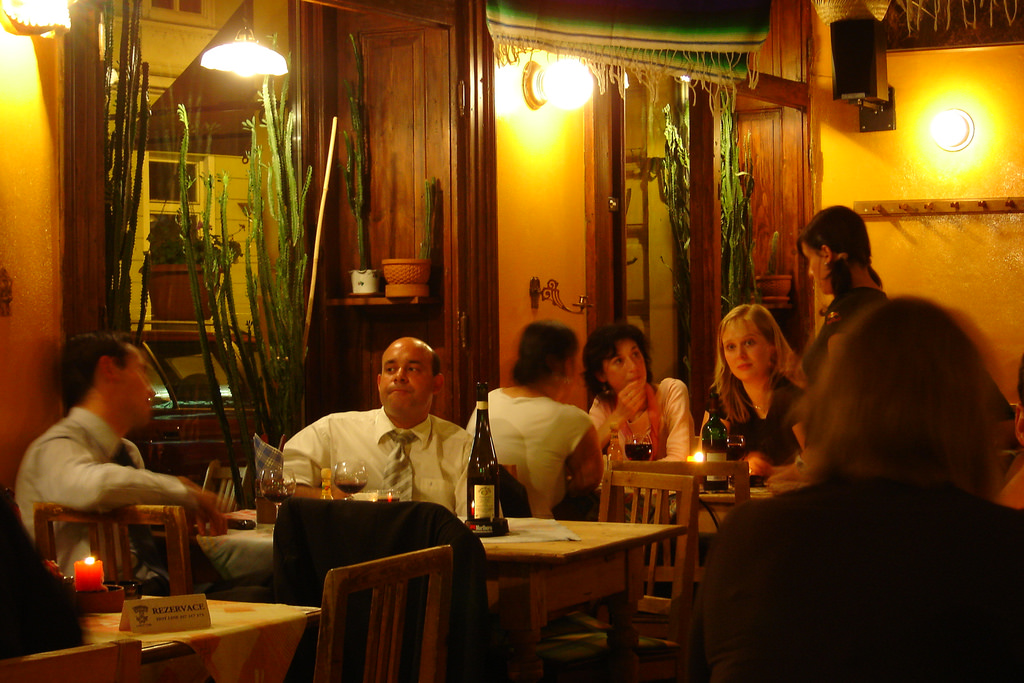Restaurant chains and independent eateries alike have the ability to use social media to create a unique voice that lets them stand out from the competition, build customer loyalty and keep fans coming back. At the same time, there’s also plenty of room for missteps and very public mistakes.
Big chains have invested resources in creating social media voices that reflect their brands. This week, The Washington Post detailed the efforts of Wendy’s social media manager Amy Brown, whose approach to Twitter has created a social persona that’s not afraid to meet snarky comments with snarky replies.
The challenge to stand out on social media can be tougher for indie restaurants and small chains with tight budgets, says restaurateur-turned-consultant Tom Grella, who launched Restaurant Social Media Experts after selling his Massachusetts restaurant last fall. Grella’s background was in marketing and running the eatery for five years gave him an education in social media marketing that he’s now working to share with other operators.
“I focused a lot on marketing and taught myself how to use social media to my benefit, moves that increased sales by about one third,” he said.
For most small restaurants, doing social media in-house may be the wrong move, he said. Picking a young, social-savvy bartender or server to tweet and update the Facebook page may seem sensible and cost-effective, but social success requires an understanding of the restaurant business and insights into human nature as well as knowing how to post and tweet, he said.
“Restaurants have to be creative in using resources economically, I get that, but in this case it’s penny wise and pound foolish,” Grella said.
Some of the common mistakes restaurants make include using stock footage or other outside photos that may look pretty and professional but don’t reflect the reality of the actual restaurant they’re supposed to represent, he said.
“The reader knows it’s not an authentic post – the picture’s too pretty or, worse, they say ‘I’ve been to that restaurant and that’s not their table,’” Grella said. “A foodie looking at that photo thinks you’re a poser.”
Photos posted to social channels should be real images from the restaurant or at least tell a story of what’s going on there. “The first thing in creating a successful social campaign is to remember what you’re in the business of doing,” he said. “You’re selling food and drink and creating an atmosphere for the customers.”
Restaurants also are often highlighting the fact that the restaurant is part of the community, a goal that can be accomplished with posts and photos that feature new products, new menu items and even new employees.
“You’re saying to guests, ‘We love and respect you so much, we want you to tell us what you think,’” Grella said. “You’d be surprised how many people come in and introduce themselves to the new bartender they saw on your Facebook page.”
Restaurants can use social channels to go even bigger with the kind of charity events and community involvement that have always been part of running a neighborhood restaurant.
The brother-in-law of Grella’s lobster supplier was a small business owner without life insurance when he died in a car crash, leaving small children behind. The restaurant turned one of its Friday $10 lobster roll promotions into a fundraiser for the family, committing on social media to donating $10 to the family for every roll sold on the day. The result: a record turnout and a $1,000 donation to the cause.
“It was a sacrifice for the restaurant, but it was the right thing to do,” he said.
“Most of the time, if the intention is genuine, [customers] will see that. For example, recently there was a major fire in Cambridge, 150 people lost their homes. A local restaurant did a fundraiser and brought in local chefs and it was so successful they covered it on the local news.
“With social media, you don’t do it for the point of the publicity. You do it first for the cause and let the goodwill benefit you. It will.”
Grella’s other tips for social media success:
- Post plenty of your own food photos
- Interact with followers to keep the conversation going
- Respond to negative reviews in a positive way to win over future readers
- Don’t use social channels for the hard sell
- Share recipes and tales of other eateries you come across in your travels
The National Restaurant Association also offers plenty of tips for restaurants looking to up their game on social media, including tips on using live video and making the most of user-generated content.
__________________________________________________
If you enjoyed this article, join SmartBrief’s email list for more stories about the food and beverage industry. We offer 17 newsletters covering the industry from restaurants to food manufacturing.
